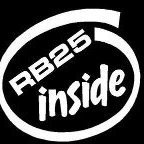Timing Light - How to get correct readings???????
Announcements
-
Similar Content
-
Latest Posts
-
By SeanR32GtSt · Posted
The rod I was moving left and right you can see looking from the passenger side floor up into the center console. IMG_8095.mov -
By TurboTapin · Posted
Yes, I had ordered the spherical bushings at the same time as the rest. I have high hopes for the anti squat reduction kit. -
Make sure you use the spherical bushes** on the lower arms, ifyou do that. ** at least, if not the whole replacement lower arm.
-
The tap for coolant flow control will be stuck open. It's not just the air door motor that dies.
-






Recommended Posts
Create an account or sign in to comment
You need to be a member in order to leave a comment
Create an account
Sign up for a new account in our community. It's easy!
Register a new accountSign in
Already have an account? Sign in here.
Sign In Now